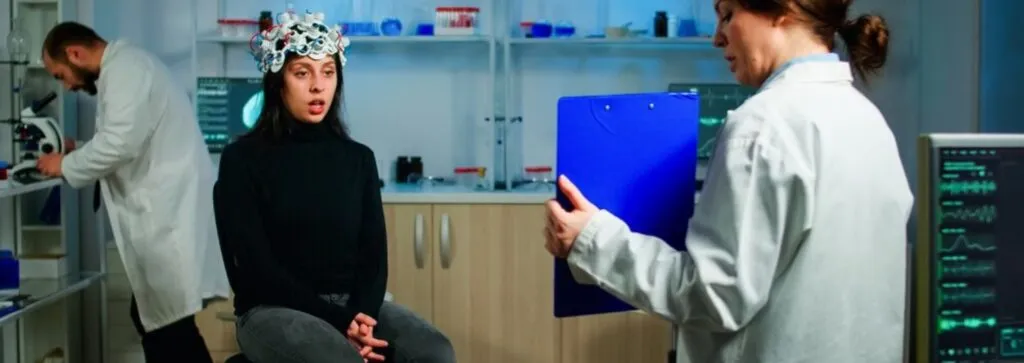The field of neurology is undergoing a remarkable transformation driven by emerging technologies. As our understanding of the brain and nervous system deepens, innovative tools and techniques are reshaping diagnosis, treatment, and patient care. From artificial intelligence to advanced imaging methods, these technologies promise to enhance our ability to manage neurological disorders, leading to better patient outcomes and a more personalized approach to treatment.
Artificial Intelligence and Machine Learning
One of the most significant advancements in neurology is the integration of artificial intelligence (AI) and machine learning into clinical practice. These technologies analyze vast amounts of data, identifying patterns that may be invisible to human practitioners. AI algorithms can assist in diagnosing conditions like Alzheimer’s disease, multiple sclerosis, and epilepsy by analyzing imaging data, genetic information, and clinical histories.
For example, AI systems can assess MRI scans to detect early signs of neurodegeneration, often years before clinical symptoms appear. This early detection can be crucial in implementing preventive measures or starting treatment sooner, ultimately improving patient outcomes. Furthermore, machine learning models can help neurologists predict the progression of neurological diseases, enabling more effective personalized care plans.
Telemedicine and Remote Monitoring
The rise of telemedicine has revolutionized the way neurologists interact with patients. Virtual consultations allow patients to access specialized care from the comfort of their homes, which is particularly beneficial for those in rural or underserved areas. This technology has become especially vital in the wake of the COVID-19 pandemic, when in-person visits were limited.
Telemedicine also facilitates remote monitoring of patients with chronic neurological conditions. Wearable devices can track symptoms, medication adherence, and vital signs, sending real-time data to healthcare providers. For example, patients with epilepsy can use devices that monitor seizures and alert their neurologists if a seizure occurs, allowing for timely interventions. This continuous data flow enhances patient management, enabling neurologists to make informed decisions based on real-time information.
Advanced Neuroimaging Techniques
Neuroimaging has made significant strides, offering unprecedented insights into brain structure and function. Techniques such as functional MRI (fMRI) and diffusion tensor imaging (DTI) allow neurologists to visualize brain activity and connectivity in ways that were previously unimaginable. These advanced imaging modalities can help identify areas of dysfunction or abnormal connectivity associated with various neurological disorders.
Additionally, PET scans combined with advanced tracers are enhancing the detection of specific neurodegenerative diseases. For instance, amyloid PET imaging can identify amyloid plaques in the brains of individuals at risk for Alzheimer’s disease, facilitating earlier diagnosis and intervention. Such advancements not only aid in diagnosis but also inform treatment strategies by providing a clearer understanding of disease mechanisms.
Robotics and Neurostimulation
Robotics is playing an increasingly important role in neurology, particularly in the area of neurorehabilitation. Robotic-assisted therapies can help patients recover motor function following stroke or traumatic brain injury by providing precise, repetitive movements that encourage neuroplasticity—the brain’s ability to reorganize itself. These devices can be tailored to individual needs, making rehabilitation more effective and engaging.
Neuromodulation technologies, such as transcranial magnetic stimulation (TMS) and deep brain stimulation (DBS), are also transforming the treatment landscape for various neurological conditions. TMS, a non-invasive procedure, uses magnetic fields to stimulate nerve cells in the brain and has shown promise in treating depression and chronic pain. DBS involves implanting electrodes in specific brain regions to modulate abnormal activity, particularly for conditions like Parkinson’s disease and essential tremors. As these technologies advance, they may offer new hope for patients who have not responded to traditional treatments.
Genetic and Genomic Advances
The field of neurology is also benefiting from breakthroughs in genetics and genomics. Genetic testing can help identify individuals at risk for hereditary neurological disorders, enabling early interventions and personalized treatment strategies. For example, understanding the genetic underpinnings of conditions like Huntington’s disease and amyotrophic lateral sclerosis (ALS) can guide the development of targeted therapies aimed at specific genetic mutations.
Gene therapy, which involves modifying or replacing faulty genes to treat disease, is another exciting area of research. Early clinical trials have demonstrated the potential of gene therapy for conditions such as spinal muscular atrophy (SMA), suggesting a future where genetic modifications could alter the course of various neurological disorders.
Conclusion
The future of neurology is bright, with emerging technologies set to transform how we diagnose, treat, and manage neurological conditions. The integration of artificial intelligence, telemedicine, advanced neuroimaging, robotics, and genetic research promises to enhance patient care and improve outcomes. As these technologies continue to evolve, they will pave the way for a more personalized, efficient, and effective approach to brain care. The convergence of these innovations holds the potential not only to change the landscape of neurology but also to offer hope and improved quality of life for millions of individuals affected by neurological disorders.

